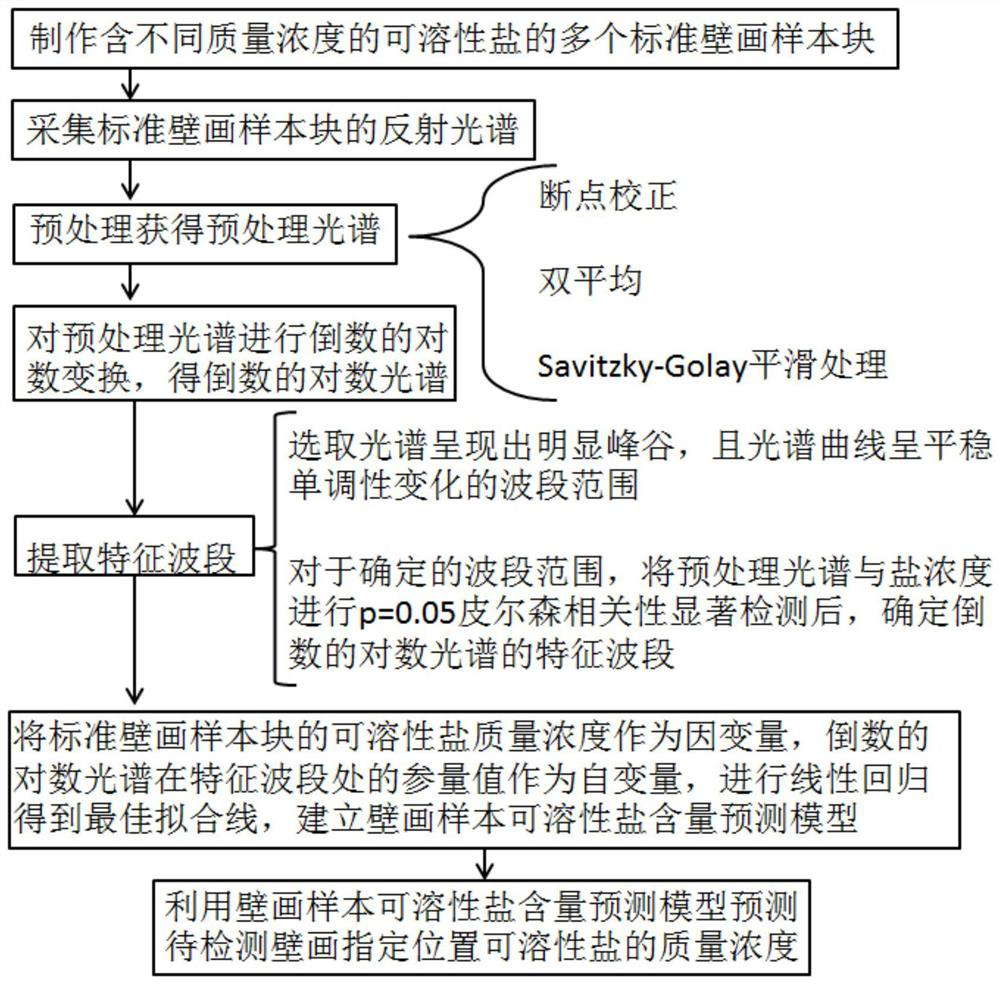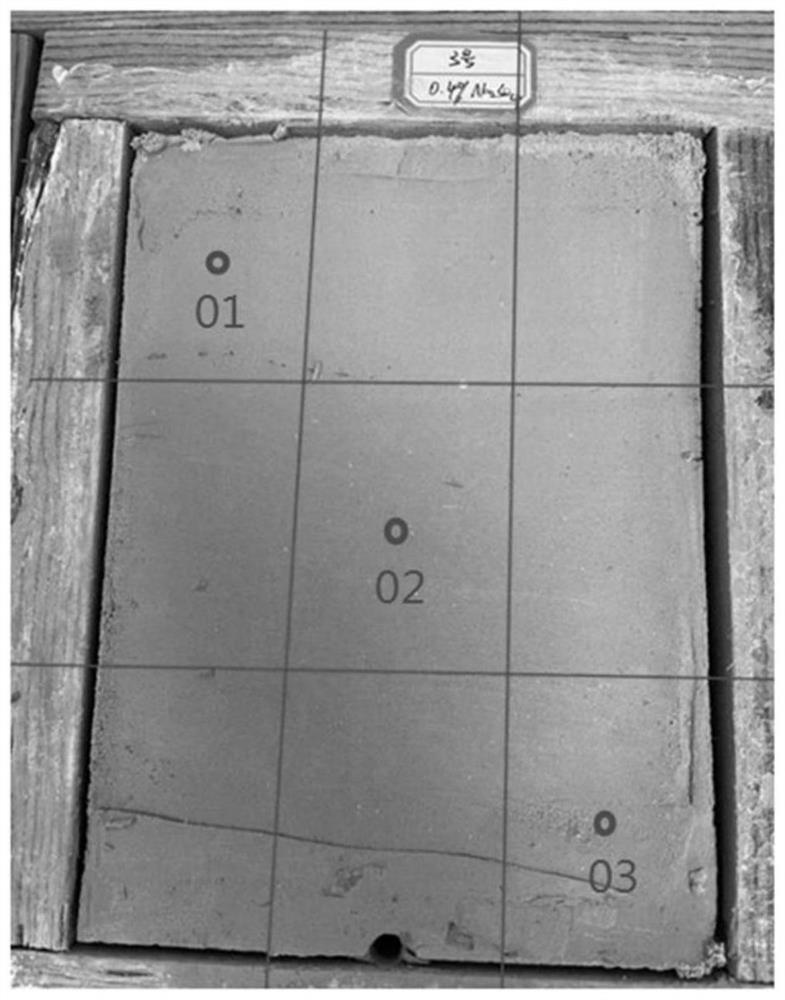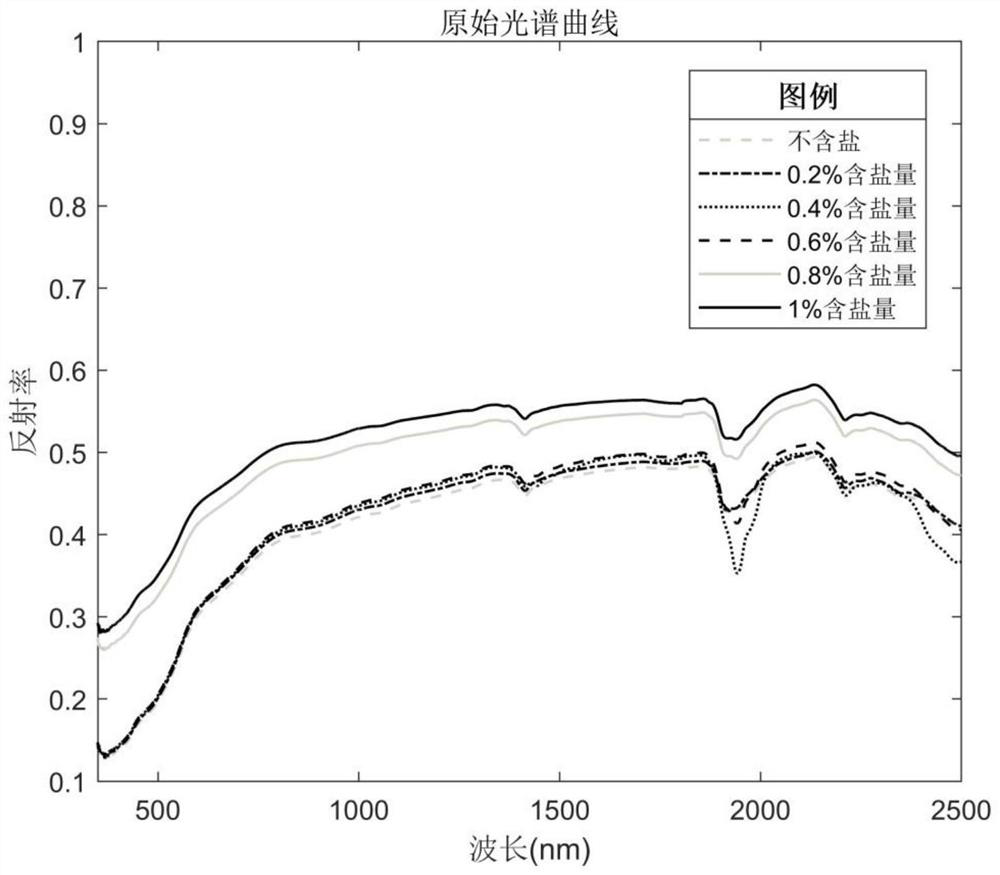Mural soluble salt content detection method based on reflection spectrum
A technology of reflection spectroscopy and detection method, applied in the field of mural detection, can solve the problems of dynamic monitoring, reduced precision and accuracy, and difficulty in detecting salt content, and achieves the effects of real-time detection, wide band response range, and excellent detection accuracy.
- Summary
- Abstract
- Description
- Claims
- Application Information
AI Technical Summary
Problems solved by technology
Method used
Image
Examples
Embodiment 1
[0057] Such as figure 1 Shown, the mural soluble salt content detection method based on reflection spectrum is characterized in that, comprises the following steps:
[0058] Step 1. Production of standard mural sample blocks
[0059] Make a plurality of standard mural sample blocks containing soluble salts of different mass concentrations, specifically including: a standard mural sample block (1 block) with a mass concentration of 0%, a standard mural sample block (1 block) with a mass concentration of 0.2%, A standard mural sample block (1 block) with a mass concentration of 0.3%, a standard mural sample block (1 block) with a mass concentration of 0.4%, a standard mural sample block (1 block) with a mass concentration of 0.5%, and a mass concentration of 0.6% Standard mural sample block (2 blocks), standard mural sample block (1 block) with a mass concentration of 0.8%, and standard mural sample block (1 block) with a mass concentration of 1%;
[0060] Wherein, each standa...
PUM
| Property | Measurement | Unit |
|---|---|---|
| Particle size | aaaaa | aaaaa |
Abstract
Description
Claims
Application Information
 Login to View More
Login to View More - R&D
- Intellectual Property
- Life Sciences
- Materials
- Tech Scout
- Unparalleled Data Quality
- Higher Quality Content
- 60% Fewer Hallucinations
Browse by: Latest US Patents, China's latest patents, Technical Efficacy Thesaurus, Application Domain, Technology Topic, Popular Technical Reports.
© 2025 PatSnap. All rights reserved.Legal|Privacy policy|Modern Slavery Act Transparency Statement|Sitemap|About US| Contact US: help@patsnap.com



